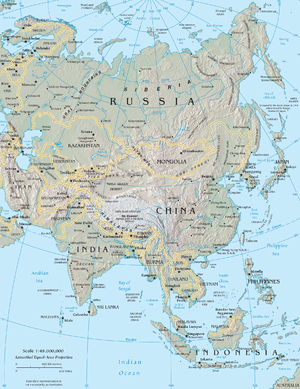
The Act East policy[1] is an effort by the Government of India to cultivate extensive economic and strategic relations with the nations of Southeast Asia to bolster its standing as a regional power and a counterweight to the strategic influence of the People's Republic of China.
Initiated in 1991 as the Look East policy during the government of Prime Minister Narsimha Rao (1991–1996), it marked a strategic shift in India’s perspective of the world.[2] It was rigorously pursued by the successive administrations of Atal Bihari Vajpayee (1998–2004) and Manmohan Singh (2004–2014).
In 2014, the Prime Minister Narendra Modi's administration announced the action-oriented, project- and outcome-based Act East Policy as a successor to the Look East Policy, emphasizing a more proactive role for India.[3][4]
- ^ Bajpaee, Chietigj (4 May 2023). "Reinvigorating India's 'Act East' Policy in an age of renewed power politics". The Pacific Review. 36 (3): 631–661. doi:10.1080/09512748.2022.2110609. ISSN 0951-2748. S2CID 251546937.
- ^ Thongkholal Haokip, "India’s Look East Policy: Its Evolution and Approach," South Asian Survey, Vol. 18, No. 2 (September 2011), pp. 239-257.
- ^ "Sushma Swaraj tells Indian envoys to Act East and not just Look East". The Economic Times. 26 August 2014. Archived from the original on 29 August 2014.
- ^ Jha, Pankaj (23 March 2019). "Vietnam's Salience in India's Act-East Policy". Oped Column Syndication.